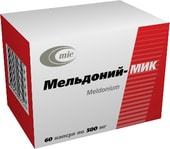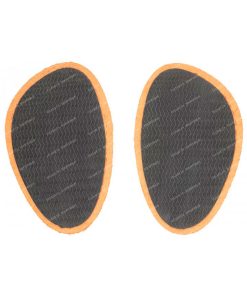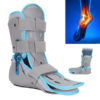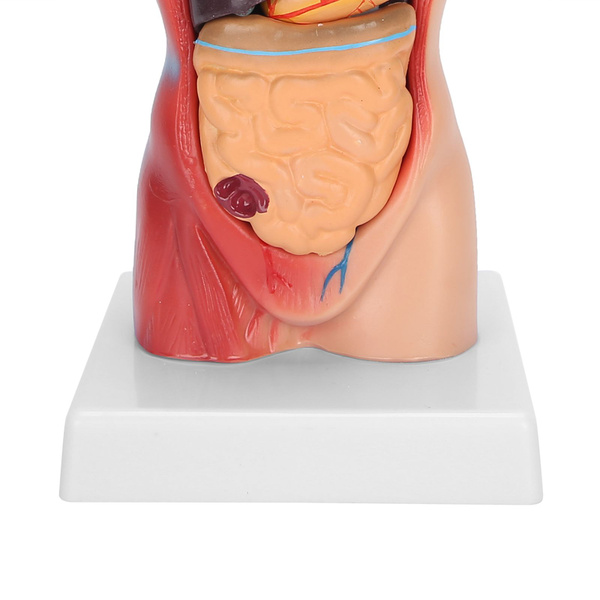-
×
 Foot Corrector
1 × $249.00
Foot Corrector
1 × $249.00 -
×
 Far East Trepang: Natural Antibiotic from Sea Cucumber
1 × $79.00
Far East Trepang: Natural Antibiotic from Sea Cucumber
1 × $79.00 -
×
 Knee Brace
1 × $389.00
Knee Brace
1 × $389.00 -
×
 Gynecological set Yuno No. 4M+
1 × $9.00
Gynecological set Yuno No. 4M+
1 × $9.00 -
×
 Medical compression tights m.5002 2 class. R.2 (S) height2 beige
1 × $69.00
Medical compression tights m.5002 2 class. R.2 (S) height2 beige
1 × $69.00 -
×
 Insoles Ayurveda 1G size 18 (flat-valgus)
1 × $19.00
Insoles Ayurveda 1G size 18 (flat-valgus)
1 × $19.00 -
×
 Medical compression stockings below the knee with a toe m.3002 2 class. р.4 (L) height1 beige
1 × $39.00
Medical compression stockings below the knee with a toe m.3002 2 class. р.4 (L) height1 beige
1 × $39.00 -
×
 Seni Soft Basic Disposable diapers 60*60 cm (absorbent), 10 pcs
1 × $29.00
Seni Soft Basic Disposable diapers 60*60 cm (absorbent), 10 pcs
1 × $29.00 -
×
 MIC Meldonium-Mick, 500 mg, 60 caps.
1 × $69.00
MIC Meldonium-Mick, 500 mg, 60 caps.
1 × $69.00 -
×
 Silicone Eyeglass Holders (6 Pack)
1 × $129.00
Silicone Eyeglass Holders (6 Pack)
1 × $129.00 -
×
 TOP Suede midsoles (1 pair per pack)
1 × $19.00
TOP Suede midsoles (1 pair per pack)
1 × $19.00 -
×
 Wrist Brace for Sports (2 Pack) | Wrist Support & Pain Relief | Carpal Tunnel, Sprains, Arthritis
1 × $19.00
Wrist Brace for Sports (2 Pack) | Wrist Support & Pain Relief | Carpal Tunnel, Sprains, Arthritis
1 × $19.00 -
×
 Fluid cleaning spray PROF 30 ml
1 × $19.00
Fluid cleaning spray PROF 30 ml
1 × $19.00 -
×
 Blue Shoe Covers (Optimal Extra), 30 Micron, 50 Pairs (100 Pcs)
1 × $9.00
Blue Shoe Covers (Optimal Extra), 30 Micron, 50 Pairs (100 Pcs)
1 × $9.00 -
×
 Bittner Aflubin Drops, 50 ml.
1 × $50.50
Bittner Aflubin Drops, 50 ml.
1 × $50.50 -
×
 Medical compression tights m.5002 Ikl.k. R.5 (XL) height2 black
1 × $59.00
Medical compression tights m.5002 Ikl.k. R.5 (XL) height2 black
1 × $59.00 -
×
 Gynecological set Yuno No. 4M
1 × $9.00
Gynecological set Yuno No. 4M
1 × $9.00 -
×
 Borimed Metromezol-Dent gel, 20 g.
1 × $19.00
Borimed Metromezol-Dent gel, 20 g.
1 × $19.00 -
×
 Lekpharm Viasil, 50 mg, 4 tablets
1 × $29.00
Lekpharm Viasil, 50 mg, 4 tablets
1 × $29.00 -
×
 Si-Line Silicone Vacuum Massage Cups Set: 4 Cups, Face Brush & Case
1 × $39.00
Si-Line Silicone Vacuum Massage Cups Set: 4 Cups, Face Brush & Case
1 × $39.00 -
×
 Egis Egiloc, 50 mg, 60 tablets
1 × $29.00
Egis Egiloc, 50 mg, 60 tablets
1 × $29.00 -
×
 White Crochet Mesh Hat
2 × $9.00
White Crochet Mesh Hat
2 × $9.00 -
×
 SFM 18G Injection Needles (1.2x40mm, 100/box)
1 × $19.00
SFM 18G Injection Needles (1.2x40mm, 100/box)
1 × $19.00 -
×
 Plethico Travisil Syrup, 100 ml
1 × $19.00
Plethico Travisil Syrup, 100 ml
1 × $19.00 -
×
 Sunglasses (J2170 C1)
1 × $69.00
Sunglasses (J2170 C1)
1 × $69.00 -
×
 VEYLE ERGO Memory Foam Pillow: Anatomical Support (39x59x10cm)
2 × $79.00
VEYLE ERGO Memory Foam Pillow: Anatomical Support (39x59x10cm)
2 × $79.00 -
×
 Luxury Gray Goose Down Pillow with Memory Foam - Belpol GALAXY SEA 50x70x4
1 × $359.00
Luxury Gray Goose Down Pillow with Memory Foam - Belpol GALAXY SEA 50x70x4
1 × $359.00 -
×
 Surgical Scissors, Sharp Curved, 100mm
1 × $19.00
Surgical Scissors, Sharp Curved, 100mm
1 × $19.00 -
×
 Eyeglass Holder
1 × $9.00
Eyeglass Holder
1 × $9.00 -
×
 Canpol babies Nasal aspirator for children (with two nozzles hard and soft) 9/119
1 × $19.00
Canpol babies Nasal aspirator for children (with two nozzles hard and soft) 9/119
1 × $19.00 -
×
 Chain Mask
1 × $209.00
Chain Mask
1 × $209.00 -
×
 Mucos Wobenzym, 200 tablets
1 × $160.00
Mucos Wobenzym, 200 tablets
1 × $160.00 -
×
 California Gold CollagenUP: 464g Marine Collagen with Hyaluronic Acid & Vitamin C for Skin & Hair
1 × $139.00
California Gold CollagenUP: 464g Marine Collagen with Hyaluronic Acid & Vitamin C for Skin & Hair
1 × $139.00 -
×
 Mayoly Spindler Pepsan-R, 30 caps.
1 × $59.00
Mayoly Spindler Pepsan-R, 30 caps.
1 × $59.00 -
×
 Syringe three-component BD Emerald 2ml with needle 23G x 1 1/4
1 × $9.00
Syringe three-component BD Emerald 2ml with needle 23G x 1 1/4
1 × $9.00 -
×
![Smith Frequency 086: [Relevant Keyword] Guide](https://globalhealingweb.com/wp-content/uploads/2024/11/6295017024-247x296.jpg) Smith Frequency 086: [Relevant Keyword] Guide
1 × $139.00
Smith Frequency 086: [Relevant Keyword] Guide
1 × $139.00 -
×
 Nurofen Express Forte (10 Capsules)
1 × $9.00
Nurofen Express Forte (10 Capsules)
1 × $9.00 -
×
 Kiev Vitamin Plant Corvalment, 0.1 g, 30 caps.
1 × $19.00
Kiev Vitamin Plant Corvalment, 0.1 g, 30 caps.
1 × $19.00
Subtotal: $2,812.50











